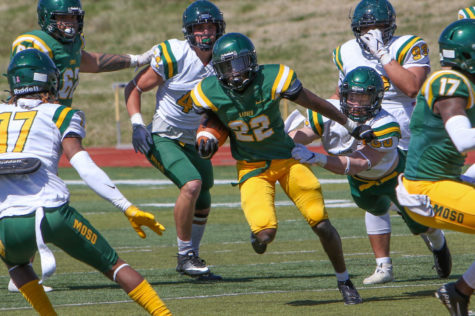The gamble of NCAA transfer portal
According to SEC Commissioner Greg Sankey, 13,000 athletes entered the portal but only 2,000 successfully transferred.
In 2018, the NCAA launched a system that revolutionized college sports. From NAIA to D1, this created options for schools and students alike.
“I think it was initially designed to help out student athletes, but I think we’re just turning into more of a cutthroat business,” Defensive Back Coach Jon Clark said.
College sports is a business. According to Forbes, in 2021 the NCAA earned more than $1.15 billion. The transfer portal is like an interstate for student athletes. It provides an exit strategy for athletes and coaches alike. However, it can be dangerous.
According to SEC Commissioner Greg Sankey, 1,600 D1 football athletes entered the transfer portal during the 2020-2021 academic year and 1,100 remained. He also stated 13,000 athletes entered the portal but only 2,000 successfully transferred.
The transfer portal increases pressure on athletes and coaches.
“The biggest thing in this profession, or just anything in life, is being able to adapt,” Defensive Back Coach Jon Clark said. “We’re in the day and time where the portal is a real thing.”
Most athletes view the portal as an exit strategy to a better opportunity. A lot of times the grass isn’t always greener on the other side. — Defensive back coach Jon Clark
“Stick it out as long as you can and use the transfer portal as a last resort,” Clark said. “Because athletes are coming in from high school to college and there is a learning curve because you’re learning how to maneuver well without your parents or whoever you live with.”
For student athletes, entering the transfer portal is a gamble because they risk not being selected.
“Give it a chance before you just go in the transfer portal, because a lot of times the grass isn’t always greener on the other side,” Clark said.
For athletes looking to transfer they must meet the requirements set forth by the NCAA Eligibility Center.
According to Jake Elman, a reporter for the website Sportscasting, the transfer process is different for NCAA D3 to a D1 or D2 university. An athlete must register with the NCAA Eligibility Center. For D3 student-athletes looking for a different D3 school, registration is not required.
This spring, two MSSU track athletes entered the transfer portal.
“I was scared to enter because I didn’t know what I was going to do in the future because you don’t know who’s going to want you,” a jumper said. “Because I have offers that I want and offers I don’t, so it’s kind of scary but I guess it’s a new journey.”
The other athlete also decided to enter the transfer portal.
“It’s kind of like starting all over again from when I was in high school. I was in the class of 2020, the year of COVID hit,” a sprinter said. “It was already hard to get offers then and I expect it to be kind of hard to try to find a school, especially when I haven’t ran or have any film in college.”
Transfer portal is a tool but athletes and coaches should use it with caution.
“It takes away some of the genuine points and the life lessons that you get through the sport, so it kind of hurts you, but it also hurts the game,” Clark said. “But that’s just where we’re at in this society right now.”
Your donation will support the student journalists of Missouri Southern State University. Your contribution will allow us to purchase equipment and cover our annual website hosting costs.

































